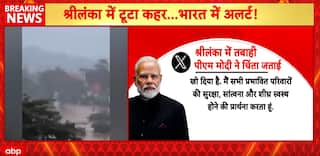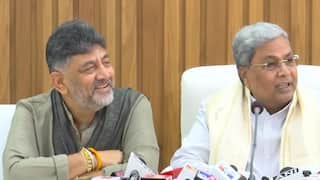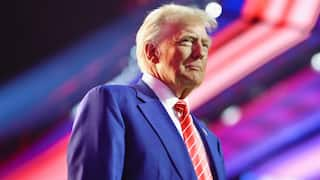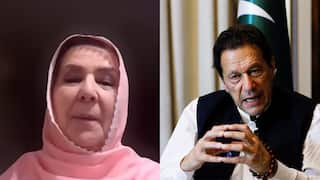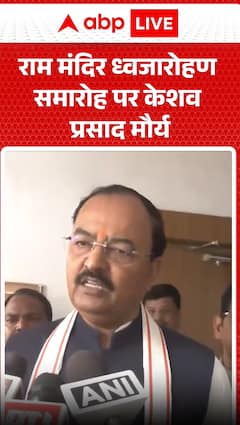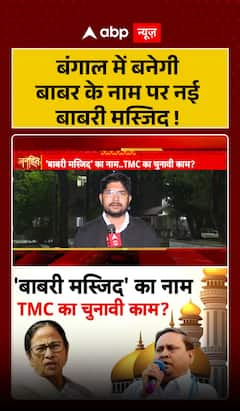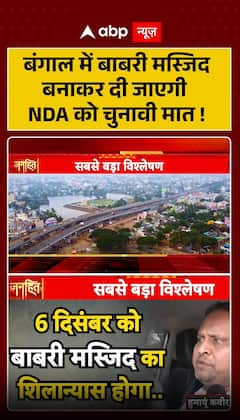Mallikarjun Kharge Did What Gandhis Could Not, By Reconstructing Congress Working Committee

In a strategic move that defies the status quo, Mallikarjun Kharge, just ten months into his presidency of the Indian National Congress, made a momentous announcement this past Sunday — an overhaul of the Congress Working Committee (CWC), the highest decision-making body of the party. While it was increasingly apparent after the Raipur plenary session held in February this year that Kharge wouldn't tread the path of CWC elections, it's imperative to recognise the sheer magnitude of this restructuring, which can be deemed a political masterstroke.
The Congress party has been grappling with a decade-long decline, largely attributed to its unwavering adherence to the existing order across all echelons. The inertia in decision-making, a conspicuous hallmark of the party's leadership under Rahul Gandhi and Sonia Gandhi, has been instrumental in its dwindling fortunes. In this light, Kharge's manoeuvre to reshape the CWC stands as a remarkable feat — an artful equilibrium achieved, adversaries conciliated, and reconciliation blueprints devised for states like Rajasthan. It's a feat that not even the Gandhis could achieve, and would be remembered as one of the party's defining moments.
The political landscape has shifted, and Kharge's deft hand has reshuffled the cards. This act of reconstruction isn't merely administrative; it's a testament to the emergence of a leader willing to breach the boundaries of conventional wisdom for the greater good of his party. As the Congress party finds its feet on this altered terrain, one thing is clear: Mallikarjun Kharge has orchestrated a move that will resound through the party's annals as a turning point, a decision that broke the chains of stagnation and set a precedent for dynamic, daring leadership.
The newly constituted CWC comprises 39 members with regular status, along with 32 individuals designated as permanent invitees and an additional 13 members with extended special invitations. In total, the committee consists of 84 members, including former party chiefs and the last Congress prime minister, Manmohan Singh.
Giving Space to Dissenters
In a stark departure from the historical trajectory, Mallikarjun Kharge has managed to shatter the long-standing perception of the Gandhi family's aversion to dissent. The unprecedented move involves the inclusion of prominent 'G23' members such as Shashi Tharoor, Anand Sharma, Mukul Wasnik, Manish Tiwari, and a cohort of others. Notably, these individuals had once signed a letter addressed to the former interim president of the Congress party, Sonia Gandhi, openly questioning her (read: undemocratic) leadership. While under the Gandhis' reign, these figures often found themselves on the periphery. The fates of leaders like Ghulam Nabi Azad stood as sombre reminders of such dynamics.
Amid widespread scepticism that these signatories would be relegated to obscurity, Kharge defied expectations and propelled them back into the fold. The inclusion of Tharoor, particularly, sends a resounding message, underscoring the 82-year-old non-Gandhi Congress president's intention to foster inclusivity. This gesture holds even more significance given Tharoor's past contest against Kharge in the Congress presidential election. This contest had ignited speculation, with a prevailing sentiment that the Gandhis held reservations, considering their known backing of Kharge.
This juncture is undeniably pivotal, as recent years have witnessed the exodus of several Congress leaders, citing the erosion of internal party democracy. Many of them, including Ghulam Nabi Azad, have lamented the absence of fair treatment. Kharge's strategic inclusion of the dissenting leaders serves as a clear-cut communication: he now holds the reins of decision-making, resolute in his commitment to overhaul the established norms.
Kharge's audacious move shows a transformation. In a single stroke, he challenged the prevailing status quo and delivered an assertion that it's he who is steering the ship, ushering in a period of decisiveness and change. This could herald a new era in the Congress, one characterised by a willingness to accommodate diverse voices.
Rajasthan Peace Formula
As Kharge ascended to the presidency of the Congress, he was confronted with two profoundly critical challenges in terms of state leadership conflicts. The first centred around the Rajasthan turmoil, and the second concerned the intricate landscape of Chhattisgarh politics. In Chhattisgarh, Kharge's decision to appoint TS Singh Deo as deputy CM played a pivotal role in quelling the restlessness that had been brewing against CM Bhupesh Baghel. This strategic move paved the way for much-needed harmony in the state, especially with assembly elections round the corner.
The Rajasthan situation posed a far more formidable test. Sachin Pilot, a seasoned leader and former deputy CM of Rajasthan, stood at the epicentre of this storm. Pilot has ambitions of his own; he exhibited an unwavering stance against any peace overture involving CM Ashok Gehlot. His proximity to the Gandhi family made it seemingly imperative for Sonia Gandhi to arbitrate a resolution, and yet such a step was notably absent. His rebellion against Gehlot took away his posts as deputy CM and Rajasthan Pradesh Congress president. But Pilot's contribution to making the Congress win Rajasthan in 2018 is undeniable.
While there were whispers suggesting Gehlot's aspirations for the Congress presidency, these speculations bore a potentially divisive undercurrent. The prospect of Pilot assuming the chief ministerial role if Gehlot became the party president triggered dissent from MLAs loyal to the latter, prompting resignations and a cascade of political turmoil. Eventually, this intricate web led Gehlot to withdraw from the race for the party chief post.
Kharge, however, approached the labyrinthine challenge with a pragmatic outlook. Numerous consultations with Sachin Pilot took place, each in an attempt to decipher a formula for reconciliation. This decision to induct Pilot into the CWC appears poised to provide a substantial boost to Pilot's national profile while simultaneously serving as a clear assertion that he remains an invaluable asset to the Congress. He is likely to now take on crucial responsibilities for important states. This stance underscores the message that any form of disregard towards Pilot will not be countenanced, sending an unequivocal message to Gehlot.
In these complex manoeuvres, Kharge has navigated the treacherous waters of internal party dynamics. His handling of these circumstances not only underscores his adept leadership but also potentially sets the stage for a renewed chapter in Congress politics, one marked by a recalibration of power dynamics and an earnest drive towards unity.
ALSO READ | What Lies Ahead For Arvind Kejriwal And AAP As Delhi Services Bill Becomes Law
Balancing Act and Fault Lines
Within the Congress party, it is now common knowledge that Kharge is a balancing expert. In this newly built CWC, he attempted the same. Kharge appointed youth leaders such as Gourav Gogoi, Kanhaiya Kumar, and Sachin Pilot but also retained veterans such as AK Antony, P Chidambaram, Salman Khurshid, and Ambika Soni. He performed a balancing act by appointing his own preferred individuals to the CWC alongside Rahul Gandhi's confidants, including Randeep Singh Surjewala, KC Venugopal, Dr. Ajay Kumar, and others.
However, though the balancing act is admirable, there are still several flaws. At the Udaipur Chintan Shivir, it was decided that 50 percent of CWC members must be under the age of 50, and at the Raipur plenary session, it was decided that 50 percent of CWC members must be from the SC, ST, OBC, minorities, youth, and women. Noteworthy is the fact that none of these decisions were upheld. It is also important to note that Kharge retained or brought into the CWC many individuals who were responsible for the downfall of the Congress in many states, including former Uttarakhand chief minister Harish Rawat, former Jammu and Kashmir in-charge Mohan Prakash, former Punjab chief minister Charanjit Singh Channi, and many others. In order to improve the party's image, such individuals could have been excluded.
Ultimately, Kharge's bold move to restructure the CWC, despite inherent tensions, signifies a resolute step. It effectively counters the notion of him as a "remote control" president, showcasing his willingness to autonomously drive change and make robust choices.
The author is a visiting faculty of journalism, political columnist, and doctoral research scholar.
[Disclaimer: The opinions, beliefs, and views expressed by the various authors and forum participants on this website are personal and do not reflect the opinions, beliefs, and views of ABP News Network Pvt Ltd.]













